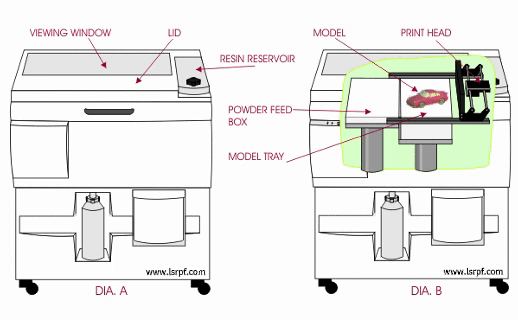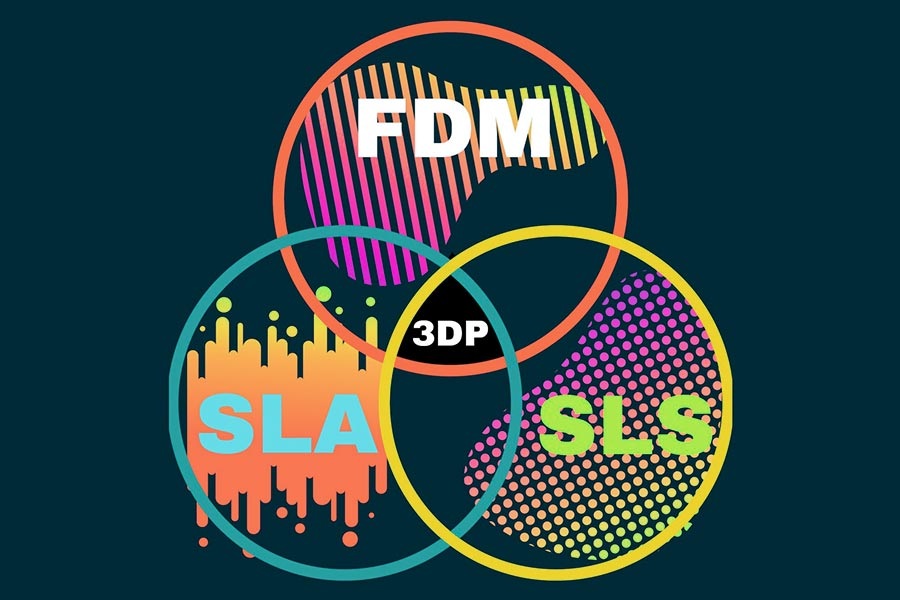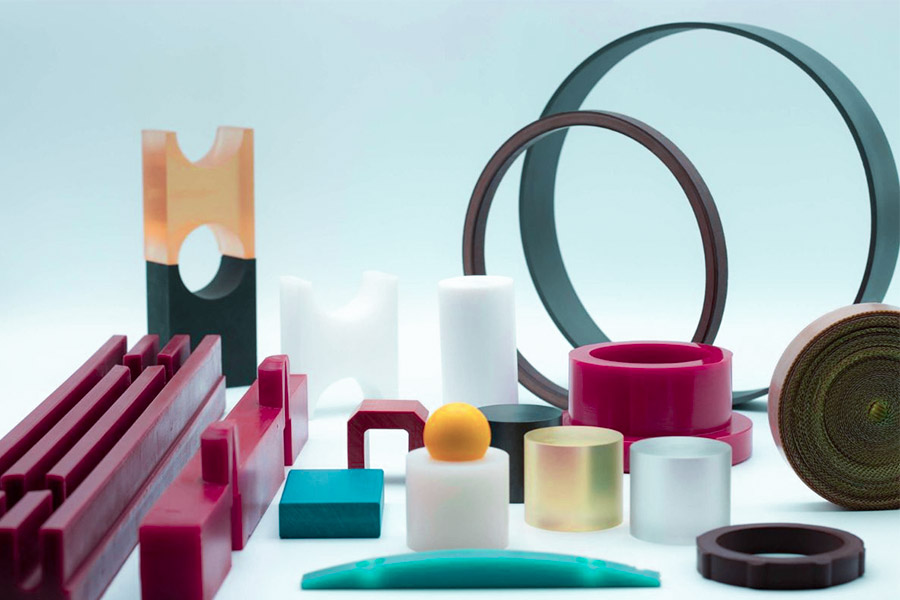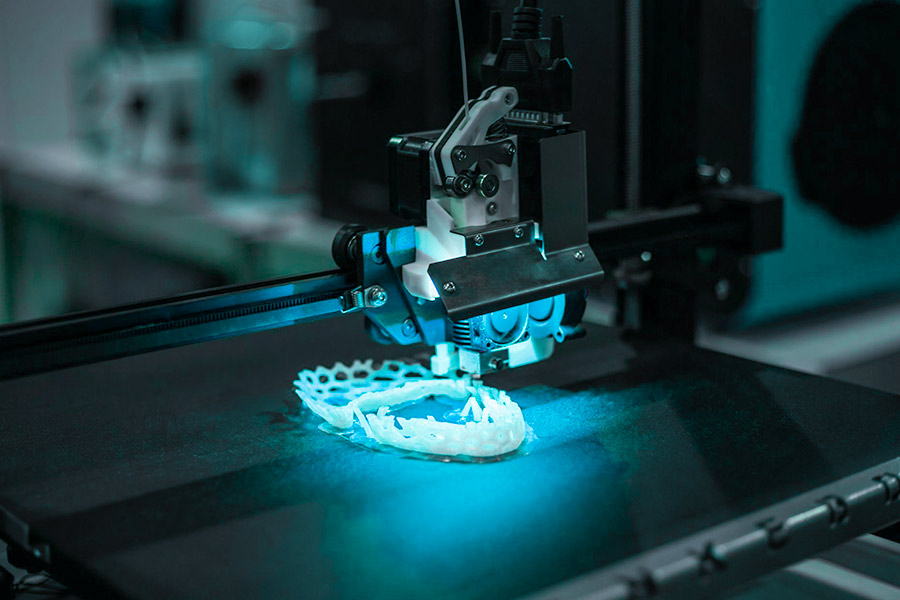В сегодняшней глобальной цифровой волне, Прототип ingiving имеет эволюцию из концепции простой истиции. Быстрое прототипирование эффективно строит модели прототипа и переводит концепции продукта в физические или цифровые формы, позволяя команде проверять техническую осуществимость и рыночный спрос на ранней стадии.
из интерактивного интерфейсного тестирования в потребительской электронике Для проверки компонентов для Новые энергетические транспортные средства , Prototype d span> the raphir Предприятия могут использовать модель прототипирования Для заранее захватывало пользовательские боли, заполнить как минимум 5 итераций оптимизации перед завершением продукта и улучшит рыночную подгонку конечного продукта более чем на 60%.

Что такое быстрое прототипирование?
Каковы технические пути для быстрого прототипирования?
1.3d Technology (sla/sls/fdm)
Технические функции:
"- sla (стереолитографический аппарат): Жидкая смола, вылеченная лазером, подходит для зубные модели .
-
Порошковые материалы (нейлон, металл) являются сформированы с помощью лазерного плавления и подходят для функциональных испытаний. - fdm (моделирование осаждения с плавным осаждением): Горячая расплава-это своего рода многослойный экструзионный литье, низкая стоимость, быстрая скорость, подходящая для проверки концепции.
Технологическая ассоциация JS:
соответствовать ± 0,005 мм точности .
2. data-translateid = "D4D860280B8131E1341DBB635F67393F" DATA-pos = "3" DATA-LEN = "23" DATA-V-7B79C893 = ""> CNC PRECION
Технические функции: Прототики высокой жесткости достигаются за счет резки металлических материалов (Aluminum, Steelyoyos. поддерживает сложную обработку поверхности с высоким использованием материала. технологическая ассоциация JS: 3. data-translateid="bec87e2f84adce09cd47ccf357949d6c" data-pos="3" data-len="21" data-v-7b79c893="">SLM Metal 3D Printing
, Производство высокой прочности, легкие металлические компоненты. подходит для подходящих сцена. href = "https://jsrpm.com/industry/aerospace"> aerospace и Медицинские имплантаты .
Ассоциация технологии JS: более 50 материалов, обработка, обработка материалов, <а а href = "https://jsrpm.com/contact-us"> JS может удовлетворить спрос клиентов на высокую температуру и коррозионные компоненты , помогая некоторым автомобильным клиентам сократить время выполнения НИОКР на 15%.
4. data-translateid="b1d728f6799ad9594a0b8dc649872d37" data-pos="3" data-len="17" data-v-7b79c893="">Injection molding
Технические функции: 3D-печать или цифровое управление используется для создания <-A href = "https://jsrpm.com/incement-molding"> быстро впрыскивающие формы , сокращая цикл развития традиционных плесени. Производство средней партии (500-5000 штук).
быстрое производство плесени , промышленные клиенты сократили свое время на 40%.
js company через обработка CNC , аддитивное производство, литье инъекции и другие технологии, глубокая интеграция различных материалов. Внедрение быстрого прототипа es привело к сокращению среднего срока службы клиентов среднего проекта. быстрое обслуживание прототипирования JS покрыть весь процесс от концептуальной дизайна до функциональной проверки и особенно подходит для требований проекта, которые требуют высокой точности, эффективности и материальной производительности.
.
Каковы влияние различных материалов на быстрое прототипирование?
Effect of mechanical properties of materials on functional verification
1. Металлические прототипы (например, алюминиевые и титановые сплавы):
- Сила: высокая прочность, высокая температура, устойчивость к коррозии, подходящие для прототипов, требующих механического напряжения или сложных условий работы (например, аэрокосмические компоненты и т. Д.).
- Задача: Трудно и дорого от обработки, а требует Precision cnc или методов производства аддитивного производства.
2. Пластические прототипы (например, ABS, Nylon):
- Сильные стороны: низкий ценой, легкий вес, простой в обработке, подходящие для Быстрая версия внешности или простых функций (например. прототипы).
- Ограничения: плохая теплостойкость и жесткость, не подходящие для высокой прочности.
3. составные материалы (например, углеродное волокно):
- Strengths: Light weight, high strength, suitable for high-end industrial or research prototypes (such as UAV structures).
- Задача: Высокая сложность обработки требует специализированной поддержки оборудования.
Adaptability of material characteristics to processing process
- Металлические материалы полагаются на Цикл обработки длинный.
- Пластмассы и композиты могут быть быстро сформированы с использованием методов 3D-печати, таких как FDM/SLA, сокращение производственного цикла.
2. Точность поверхности:
- Допустимость металлических материалов составляет ± 0,005 мм, подходит для прототипов точной сборки.
- шероховатость поверхности пластических прототипов относительно высока и требует полировки или распыления на более позднем этапе.
Баланс между затратами на материал и временем выполнения выполнения
p-793 = ""> Баланс между затратами на материал и временем выполнения выполнения- Стоимость затрат (например, титановые сплавы): затраты на производство прототипа значительно увеличились, но они могут напрямую имитировать производительность конечного продукта и снизить риск повторения позже.
- недорогие материалы (такие как пластики PLA): подходит для проектов с ограниченными бюджетами, но требует баланса точности и долговечности для удовлетворения требований.
- Стабильность подачи материала: JS поддерживает быстрое закупку более 50 материалов для обеспечения своевременной доставки материалов-прототипа и избегает дели.
Требования к процессам переработки материалов
P> P> P> P> P> P> P> P> P> P> P> P> P> P> P> P> P> P> P> P> P> P> P> P> p> PS893 = ""> Требования к процессам переработки материалов- Нужна полировка, покрытие, анодное окисление или другое лечение для улучшения внешнего вида или коррозионной устойчивости.
- Обычно распылившиеся, шелковая экрана, печатная или гальваническая, с некоторыми материалами, требующими отжига для удаления внутреннего напряжения.
- Композиты: ОБЩЕСТВЕННОЕ ОБЕСПЕЧЕНИЕ СЛЕДУЕТСЯ для обеспечения сглаживания.
Влияние выбора материала на устойчивость на устойчивость> Влияние материала на устойчивость на устойчивость на устойчивость> естественно разлагаемый Plastmes или Recyclable Metos , так что-то, так же, что-то вроде, так же, что может быть в обстоятельствах, может быть в обстоятельствах, так же, что может быть в обстоятельствах. Зеленые производственные тенденции. ">"> "js js js js js js js js js js js js js js js js js js js js js js js js js js. Технология.

в чем разница между быстрым макетом и быстрым прототипированием?
1. data-translateid="0b5135178d89e493471cd66b27f40de7" data-pos="3" data-len="30" data-v-7b79c893="">Differences in core objectives
быстрый макет: Визуальная модель, используемая для быстрого построения внешнего вида, размера или интерактивного раздела продукта. Его основная цель состоит в том, чтобы проверить эстетическую, логику взаимодействия человека или концептуальную осуществимость дизайна продукта. Часто не включает в себя сложные функциональные или физические тесты на производительность, основное внимание уделяется интуитивно понятной форме и эксплуатационному опыту. Прототип телефона и прототип взаимодействия UI/UX.
быстрое прототипирование: Необходимо имитировать фактические индикаторы использования и тестирования, такие как прочность материала и эффективность рассеяния тепла. "aftinted vtintditdtinted 2.Technical means
3. Стадия применения
<таблица стиля = "Пограничный колот: коллапс; ширина: 99,9046%; ширина границы: 1px; пограничный цвет: #000000; высота: 216.469px;" border = "1">The core difference between a Rapid Mockup and a Rapid prototype is the target phase and application phases. The Mockup is quickly conceptualized through low-cost materials and is suitable for early design review. Rapid prototyping, which verifies core structural strength and assembly accuracy through precision manufacturing, is commonly used for intermediate testing and mass production preparation.
How to match suitable processing techniques in rapid prototyping?
1.Clarify requirements and objectives
First, the purpose of the prototype (such as functional testing, appearance display or structural verification) needs to be determined, as well as the requirements for accuracy, strength, surface quality, etc. For example, rapid prototype can prioritize 3D printing (such as FDM or SLS) if rapid verification of a mechanical structure is required, or CNC machining or silicone replication if high-precision appearance models are required.
2.Material compatibility Analysis
Process selection is based on the characteristics of the prototype material, such as high temperature resistance, flexibility or electrical conductivity. For example, metal parts require selective laser melting (SLM), while transparent parts can be made using resin photopolymerization (SLA) or CNC cutting.
3.Process matching principles
- Complex structure: Priority is given to adding manufacturing (3D printing), such as PolyJet, to achieve multi-material mixing.
- Mass Rapid Iteration: Combining CNC and 3D printing hybrid technology to balance efficiency and economy.
- Small batch production: Vacuum replication or laser sintering (SLS) balances cost and delivery cycle.
4.Cost and time balance
Low-complexity prototypes can use low-cost processes (such as desktop FDM), while high-precision requirements require investment in industrial-grade equipment (such as five axis CNC). At the same time, it is necessary to assess post-treatment time, such as the need for cleaning and secondary curing of SLA.
5.Technical validation and iteration
The feasibility of the design is verified by rapid sampling and the process parameters are adjusted according to the test results. For example, metal casting prototypes require multiple adjustments to the mold, while 3D printing can quickly modify model files.
6.Technology integration and automation
Combining CAD/CAM software to optimize processes such as topologically optimized CNC machining paths directly generated, or AI algorithms to predict 3D printing the deformation and compensate in advance.
Will Rapid prototyping replace traditional engineering design thinking?
The core value of traditional engineering design is irreplaceable
1.Systematic design framework:
Traditional engineering follows a systematic process of requirements analysis, conceptual design, detailed design, and verification testing to ensure the integrity and reliability of the product from concept to implementation. For example, car airbags must be designed in strict compliance with collision testing standards, and rapid prototyping alone cannot replace rigorous simulation and verification.
2.Risk control capability:
Traditional engineering avoids design defects through multiple rounds of reviews, fail-pattern analysis (FMEA), and other processes, while relying solely on rapid iterations can lead to key issues (such as compliance risks for medical devices) being overlooked.
Rapid prototyping overcomes limitations of traditional engineering
1.Accelerated validation and iteration:
Rapid prototyping shorten the validation process from a few weeks to a few days by quickly creating physical or digital models.
2.Reducing trial and error costs:
In traditional engineering, design errors can lead to higher die scrap costs; waste of resources can be avoided by pre-verifying low-cost prototypes,such as FDM plastic parts. JS company has helped customers detect structural strength issues through prototype testing, saving 30% on late rework costs.
Synergistic application scenarios for both
| Stage | Traditional engineering design | Rapid prototyping |
| Concept validation | Requirement documents, sketches, preliminary simulations. | Handmade models, low-cost 3D-printed parts. |
| Functional verification | Detailed design, engineering drawings and testing of key components. | CNC machining prototype, silicone mold casting. |
| Mass production preparation | Full size inspection, process curing, supplier audit. | Small batch trial production production, material certification. |
Rapid prototyping is an accelerator, not a substitute for conventional engineering thinking. It helps engineers validate innovative ideas faster by shortening iteration cycles and reducing trial and error costs, but core design logic, safety standards, and system processes still rely on traditional engineering thinking. The combination of the two is the key to efficient innovation and reliable implementation in modern manufacturing.

Why choose JS as your prototype partner?
1.Full chain rapid prototyping solution
- CNC precision machining: Supports ±0.005mm of ultra-precision tolerances and can process materials such as metals and plastics quickly to meet the structural and functional verification requirements of high-complexity prototypes.
- 3D printing: Compatible with FDM, SLA, SLS, Metal printing, and other technologies, enables rapid prototyping prototyping of complex internal structures or lightweight prototypes.
2.Rapid delivery and iteration capability
- Standardized process: From design to finished product in 1-2 weeks, emergency orders can be compressed to 3-5 days to speed up product launch.
- Digital collaboration: Supports online file upload, real-time progress tracking and remote collaboration to reduce communication delays.
- Quick feedback mechanism: Technical solutions and offers are provided within 24 hours, engineers are involved in design optimization and iteration costs reduced.
3.Precise investment and resource optimization
- Process intelligence matching: Recommended optimal process solutions through AI algorithms, saving an average of 20% in manufacturing costs.
- Small-batch trial production: 10-50 units can be produced at low-cost cost, avoiding the risk of large-scale production.
4.Quality reliability verification
- High-precision detection: Equipped with coordinate measuring instrument, spectrometer and other equipment to ensure that prototype size and material properties meet standards.
- Functional test support: It can simulate real working conditions (such as waterproofing, earthquake resistance, temperature resistance) to verify the reliability of the prototype.
- Compliance assurance: Complies with ISO 9001 and industry standards, especially in more demanding areas such as healthcare and automotive.
5.Sustainable development
- Energy conservation: Using renewable energy and closed-loop recycling systems can reduce carbon emissions by 20%.
- Environmentally friendly material options: Provide green prototype solutions such as bioplastics and biodegradable materials.
6.Recognition of success stories
- Automotive: Rapid production of a prototype electric vehicle battery pack for an automotive company, verification of heat dissipation and structural strength, and reduction of the R&D cycle by 40%.
- Consumer electronics: The prototype of metal shell case of the smartwatch with CNC machining has achieved a precision of 0.02mm, guaranteeing 98% compliance with the mass production target.
Сводка
Rapid Prototype is a fast method to visualize product concepts and validate functions. At its core, abstract ideas can be quickly turned into interactive physical or digital samples utilizing techniques such as 3D printing and CNC. Whether in industrial manufacturing, consumer electronics, or healthcare, Rapid prototyping not only shortens the life cycle of a product from concept to market, it also promotes interdisciplinary collaboration and innovative thinking. With the continuous advancement of technology, Rapid prototyping will continue to be an important engine of product innovation, enabling all industries to break through the boundaries of traditional development models.
Disclaimer
The content of this page is for informational purposes only.JS SeriesNo representations or warranties of any kind, express or implied, are made as to the accuracy, completeness or validity of the information. It should not be inferred that the performance parameters, geometric tolerances, specific design features,material quality and type or workmanship that the third-party supplier or manufacturer will provide through the jusheng network. This is the responsibility of the buyerAsk for a quote for partsto determine the specific requirements for these parts.please Contact us Learn more information.
JS Team
JS is an industry-leading companyFocus on custom manufacturing solutions. With over 20 years of experience serving more than 5,000 customers,we focus on high precisionCNC machining,Sheet metal fabrication,3D printing,Injection molding,metal stamping,and other one-stop manufacturing services.
Our factory is equipped with more than 100 state-of-the-art 5-axis machining centers and is ISO 9001:2015 certified. We provide fast, efficient and high-quality manufacturing solutions to customers in more than 150 countries around the world. Whether it's low-volume production or mass customization, we can meet your needs with the fastest delivery within 24 hours. chooseJS TechnologyIt means choosing efficiency, quality and professionalism.
To learn more, please visit our website:jsrpm.com
FAQS
1.Why the rapid prototyping?
Rapid prototyping saves time and costs by quickly validating design concepts, identifying potential problems in advance, reducing development risks, promoting team collaboration and user feedback, and avoiding direct investment in developing immature products.
2.Does rapid prototyping require repeated modification?
need. Repeatedly modify the verification function and adjust the design to ensure that the final product meets the requirements while improving development efficiency and user experience and avoiding large-scale rework in the later stages.
3.What are the advantages of 3D printing in rapid prototyping?
The advantages of 3D printing in rapid prototyping are: mold free rapid prototyping, support for single-use molding of complex structures, wide material selection (plastics, metals, resins, etc.), low cost and time saving, especially for small batch trial production and design iteration optimization.
4.What common problems do rapid prototype encounter during production?
Insufficient accuracy (error ±0.05mm or more), surface roughness requiring secondary processing, limited material strength, additional support for complex structures, high small batch costs, poor design adaptability, short lead times, fragile structures requiring advance planning of processes and material selection.






